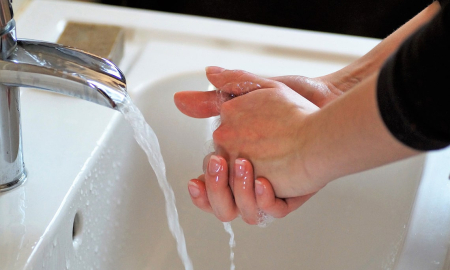Better L8 Than Never...
Revision to Legionella
Control in Water Systems
After more than 13 years, The Health and Safety Executive (HSE) has finally updated its guidance for legionella management and control, with the revision of ‘Legionnaires’ disease: The control of legionella bacteria in water system Approved Code of Practice (ACOP) L8’ and publication of the new ‘Technical Guidance HSG 274’.
In our latest blog, Paul Sear, technical manager at SOCOTEC, discusses the changes and explains what organisations need to know.
As you’ll probably be aware, the HSE’s new ACoP and technical guidance on legionella management and control is now published and in place. I thought a blog would be a good opportunity to take a look at the changes and see what they mean for businesses.
Clear and concise
You’ll be glad to know the new ACOP L8 is much clearer and more concise than its predecessor. First of all, the ACoP and technical guidance have been split into separate documents. The Technical Guidance HSG 274, in turn, has been divided into three easier-to-read subsections:
- Part 1, The control of legionella bacteria in evaporative cooling systems
- Part 2, The control of legionella bacteria in hot and cold water systems
- Part 3, The control of legionella bacteria in other risk systems
Secondly, throughout the ACOP L8 guidance, there’s more emphasis on the duty holder, making it much easier for them to understand their role and responsibilities when it comes to controlling legionella risk.
Risk assessment
In another departure from old guidelines, ACOP status has been awarded to the ‘Review of control measures: Monitoring and routine inspection’ and ‘Carrying out a risk assessment’. The HSE also offers more helpful information about risk in artificial water systems (BS8580:2010). Duty holders and responsible persons are no longer guided to carry out risk assessments every two years, but they do still need to regularly review and audit risk assessments and control processes, so they can’t sit back and relax. Undertaking audits of control procedures should become the norm – which is a very positive step.
Competency and control
In previous versions of the guidance, a single individual was in charge of ‘competency’, but under the L8 document it is recommended that responsibility is shared, which should make it easier for organisations to manage risk in large and complex systems. The HSE has also made the decision that it’s ok for people with the necessary competence to be appointed from outside the organisation, as long as they have sufficient authority, training and knowledge of the installation; the duty holder keeps overall responsibility.
Designer responsibilities
The last key change under the updated guidance is the stricter requirement for architects and designers to factor legionella risk management into building design. By considering it from the very beginning, it should be much easier for duty holders to keep risks under control.
HSG274 Part 2
When the bulk of the new guidance was published, HSG274 Part 2 was an interim document, but the final guidance document is now available, with more detailed guidance for responsible persons.
The main changes to HSG 274 Part 2 that we need to be aware of include:
- More information on the types and application of hot and cold water systems
- The recommendation of a more risk-based approach to how often control measures are taken
- Suggestions regarding the design of new water systems to discourage legionella growth
- Updated principles relating to the treatment, operation and inspection of hot and cold water systems
- The inclusion of guidelines for landlords of shared premises and special considerations for healthcare and care homes
If you have a cooling tower or other risk systems it is important to note there are changes in the technical guidance for these types of systems as well; do not ignore Parts 1 and 3.
What does this mean?
For businesses, as long as you already have good control measures in place, you should have no need to carry out many changes under the new L8 regime. At the same time, though, some of the updates might affect how you manage risk in the future, so reading the new guidelines properly is a definite must. Don’t forget to talk to your experts to get some advice on how to make sure you are fully compliant.
If you need help getting your legionella risk management under control or evolving your current control measures, I’m more than happy to help. Contact us on salesuk@socotec.com
Visit our Legionella page for more information




Add new comment